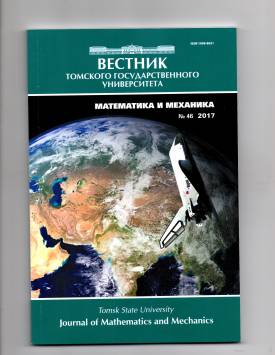A composite surface close to pseudo-minimal
This publication continues the series of the author's papers on simulation of a deformed petal of an axisymmetric parabolic reflector. V.M. Gryanik and V.I. Loman proposed a simulation scheme for the deformed petal shape of the metallic mesh axisymmetric parabolic reflector. The scheme was developed for an isotropic elastic material attached to parabolic hard edges and there seem to be no method to adapt it for an orthotopic metallic mesh with other methods of fixing. The author's papers of 2016 propose a shape simulation method for an orthotopic elastic material. The method is based on using a surface for which the ratio of principal curvatures is constant (expressed by the ratio of the stretching factors of the material in two orthogonal directions). Such a surface is called pseudo-minimal. The method is adapted in these papers to a specific situation described by Gryanik and Loman (metallic mesh petal of an axisymmetric reflector). The author has also solved more general problems. The existence theorem has been proven (the latitude of the class of pseudo-minimal surfaces is the same as for minimal surfaces, namely, two functions of one argument; basically, a pseudo-minimal surface with a specified weight is determined by the boundary line). The data about the latitude class data allow other interpretation: a composite pseudo-minimal surface can be (theoretically!) constructed by attaching a family of flat lines to one flat line. An example of such a surface (given by a vector function) is constructed in this paper. The same surface is constructed in an explicit form. This opens possibilities for simulating an orthotropic material surface when choosing different methods of fixing.
Keywords
явное задание поверхности, задание поверхности посредством семейства образующих кривых, псевдосредняя кривизна, ортотропия, главные кривизны, гладкая поверхностьAuthors
| Name | Organization | |
| Bukhtyak Mikhail Stepanovych | Tomsk State University | bukhtyakm@mail.ru |
References

A composite surface close to pseudo-minimal | Vestnik Tomskogo gosudarstvennogo universiteta. Matematika i mekhanika – Tomsk State University Journal of Mathematics and Mechanics. 2017. № 46. DOI: 10.17223/19988621/46/1
